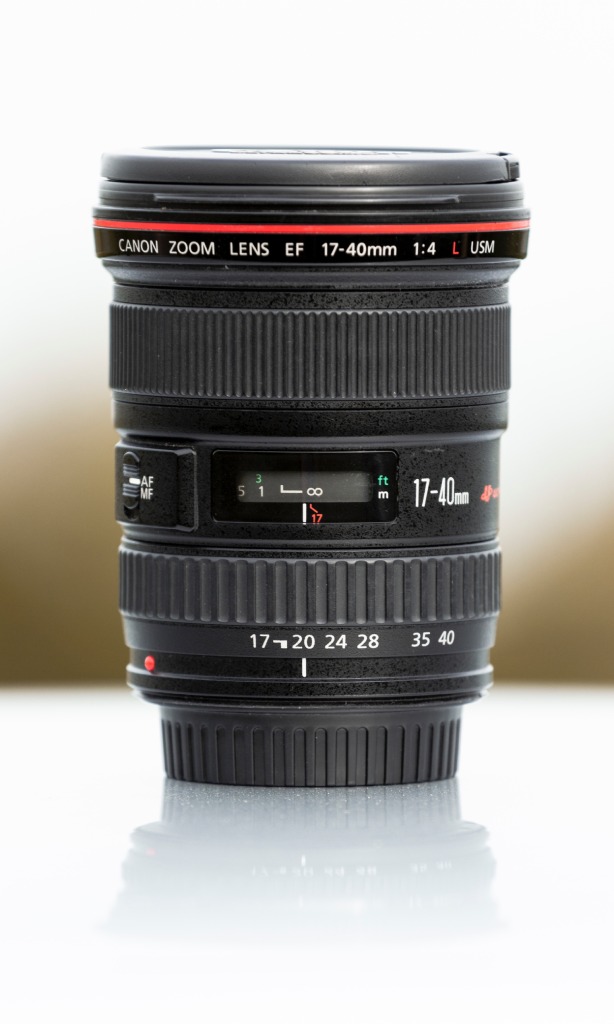EF, STM, USM, IS...there are a ton of acronyms that Canon uses to describe different features on their lenses.
But what do they all mean, and why are they important?
In this Canon lens terms guide, you'll learn what some of Canon's most often used acronyms mean so you can make a more informed purchase next time you're in the market for a new lens.

Canon Lens Term: EF, EF-S, EF-M, and RF Indicate the Type of System for Which the Lens was Designed
 Photo by NeONBRAND on Unsplash
Photo by NeONBRAND on Unsplash
In Canon parlance, EF means "electro-focus" whether the lens is EF, EF-S, or EF-M. This means the camera controls the lens's focusing system.
The addition of the S and M designations indicates the Canon camera system for which the lens was designed.
So, EF lenses (like the one shown above) are designed for use with Canon full frame cameras, though EF lenses can also be used on crop sensor cameras as well as EOS-M cameras, so long as you have an adaptor.
 Photo by Dollar Gill on Unsplash
Photo by Dollar Gill on Unsplash
EF-S lenses (like the one shown above) are built for usage with Canon's crop sensor cameras. These lenses can only be used on crop sensor cameras.
EF-S lenses are often smaller than their EF counterparts, and are typically also less expensive as well.
EF-M lenses are specially designed for the EOS M system. They are smaller still than EF and EF-S lenses and can only be used with EOS M cameras.
The newest Canon lens type is the RF mount lens, which is designed for use with Canon's EOS R mirrorless system.
The RF lenses only work on EOS R cameras, though you can buy an adapter that allows you to use EF lenses on an EOS R camera.
Canon Lens Terms: STM and USM Indicate the Canon Lens Motor Types
 Photo by Maxime Agnelli on Unsplash
Photo by Maxime Agnelli on Unsplash
Most Canon lenses have an Ultrasonic Motor (USM), which is named as such because the lens converts ultrasonic vibration into rotational force.
Not only does this result in improved focusing for sharper images, but it also results in quieter focusing when shooting still images and improved speed with which the lens can acquire focus.
Canon's stepping motor (STM) design, on the other hand, is better suited for shooting video.
STM motors are extremely smooth and incredibly quiet, so when shooting video you hear the subject of the video rather than the lens working to acquire focus.
Canon Lens Terms: IS Lenses are Stabilized
 Photo by William Bayreuther on Unsplash
Photo by William Bayreuther on Unsplash
Canon lenses with the IS designation are image stabilized, meaning the lens has stabilization built into it rather than having to rely on in-body image stabilization in the camera.
Image stabilization is advantageous because it allows you to use a slower shutter speed (up to four or five stops more) when handholding the camera with less incidence of motion blur. Most Canon telephoto lenses (like the one shown above) have IS as these longer lenses are more susceptible to camera shake.
Image stabilization is achieved by elements inside the lens that move to compensate for movement induced by the photographer. The result is sharper images when shooting handheld.
Canon Lens Terms: L Stands for Luxury
 Photo by Tom Pumford on Unsplash
Photo by Tom Pumford on Unsplash
Canon's top-of-the-line lenses have the L designation, which stands for luxury.
These lenses are designed for professionals and have improved optics (like ultra-low dispersion elements), wider apertures (for improved background blur and low-light shooting), and weather sealing that keeps dust and water out of the lens.
As you can see above, L-series lenses have a red ring around the barrel near the end of the lens. You can also see the EF and L designations on the lens barrel.
Quick Tip: Canon lenses often have a II or III in their name. These numerals indicate the generation of the lens.
This blog post about "Canon Lens Terms" was first published on our website here https://www.photographytalk.com/canon-lens-terms
This blog post about "Canon Lens Terms" was first published on our website here https://www.photographytalk.com/canon-lens-terms